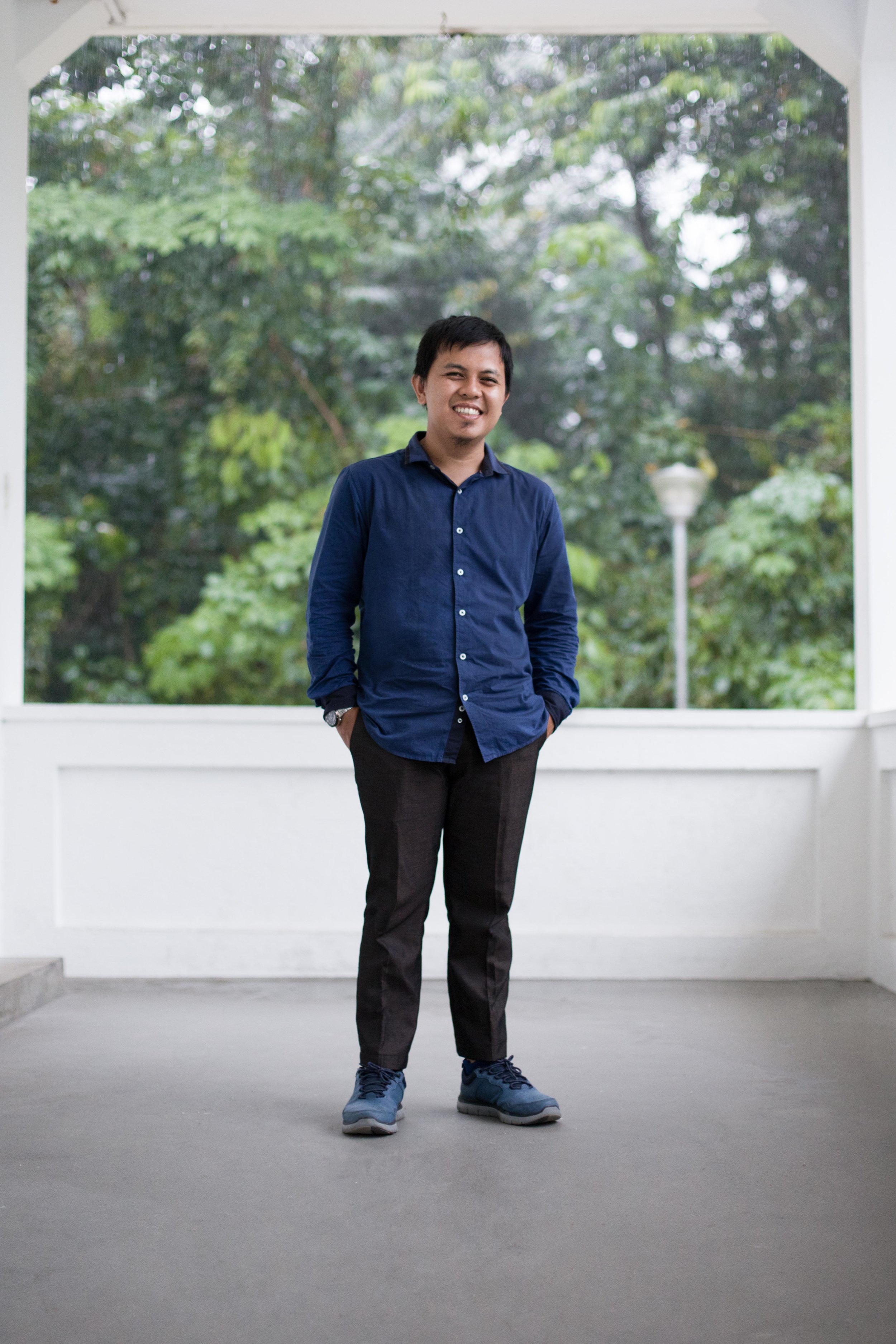DISINI Discovers – Lugas Syllabus
At first glance, Lugas Syllabus’ art might look like a madcap trip down the rabbit hole, but look closely and you’ll find elements that are surprisingly familiar. His work weaves in iconography from pop culture, media, technology, and folklore, and manages to strike a balance between being intriguing, amusing, and, sometimes, strangely unsettling. Lugas’ sculpture for DISINI, which brings to life the action sequences depicted in panels of comic books, is an intervention of the environment it’s placed in, and while Lugas is a man of few words, his work, as we see, is larger than life.
1/ You’ve said that your village in Bengkulu and your childhood form the background of your work— can you elaborate?
I was born in Bengkulu but spent my childhood in Pagar Alam in Sumatra, which is in the south, in Palembang. ‘Pagar’ means gate and ‘Alam' means nature—literally, the gate of nature. It’s located in the middle of the hill with a big mountain, Mount Dempo, in the centre. I was exposed to nature at a young age, so the backgrounds of my art and paintings have a lot of nature but the concepts are often inspired by contemporary life.
4/ What was one instance when you tweaked an idea?
In 2009, I was invited to join a performance art festival in Japan. While travelling there, I had to transit in Singapore and I forgot to change the time on my watch to the local time. I ended up missing my flight. I had to negotiate with the airline and I showed them my invitation from my sponsor and the government. They gave me another flight for free but I needed to stay in the airport for 24 hours—I felt like a mini Tom Hanks (in The Terminal). By the time I arrived in Japan, I’d missed all the parties and performances. I decided to change the idea for my performance. When it was my turn, I just walked around, on the stage, and around the lake that was there. People walked behind me—these were artists from all over the world, and I’d never met them before, and they weren’t sure what was happening but they followed me from street to street. I called it the Missing Performance, and it was inspired by what happened on my way there.
7/ What do you hope to make people think/feel through your art?
I hope that my artworks, no matter how they look, will have a positive impact on people. This means that even when I’m painting about suffering, or it’s a piece that’s all black, I wish it’ll bring light.
8/ Do you have a favourite piece of work that you’ve created?
Yes—a sculpture titled The Sound of the End is the New Beginning. It was exhibited at Art Stage in 2016, and it’s made of almost all-natural materials, including bull horns and goat skin. The sculpture is based on the concept of sangkakala, which talks about the end of the world. I placed a sensor in the sculpture and whenever people walked by, there’d be a sound. The idea is that when you’re doing good things, you don’t have to be scared about what’s next. It’s also one of my favourite pieces because it’s a reflection of my life—although artists often try to make a perfect piece of art, we always make mistakes.
9/ Can you tell us a bit more about the piece you’ve created for DISINI, and what it’s trying to convey?
The rabbit is a continuation from my series from Melbourne. I made the sculpture in Yogyakarta, and at first, I thought about the rabbit being one which takes risks, portraying the idea that one cannot wait for the perfect time to jump. When I sent it to Singapore, though, I got inspired by what I read about Sri Tri Buana (Sang Nila Utama), who played a part in Singapore’s history, at the National Museum of Singapore. If you look carefully, the rabbit is holding a carrot without any leaves—basically, stolen from a kitchen. I thought about the rabbit representing Sri Tri Buana, whom I see as a slightly rebellious character because he came across this island and decided to claim it as his.
14/ Is there something most people don’t know about you?
When people meet me, I make jokes and I look like I love life but actually, I do think about death more than life. Every day, I think about life and death. I feel that death is not something scary.
15/ What’s a dream project you’d love to undertake?
To make a landmark sculpture, maybe in Asia. I don’t know how I can do that but I’ll keep on making art. If I don’t get the opportunity, I’ll do it in my house or studio.
16/ As an artist, how would you measure success?
I think the success of the artist is not the point when they become very famous. I believe that an artist is successful when he/she can make art that’s almost similar to the initial idea. It’s very hard. While we have unlimited ideas, we are limited by materials in this lifetime.
17/ Any advice you’d give to aspiring artists? Or the best piece of advice you’ve ever received?
Keep believing in life and trusting in art. Actually, it’s from my Prophet—he says the best man is the one that can give the best to other men. It reminds me to always do good things wherever I go.
2/ What was your childhood pastime back then?
Looking for fish in the river—but not fishing! We fished using baskets, sometimes bamboo.
3/ Your work is quite varied—you do paintings, sculptures, and also performance art. What, to you, is the difference between each of the mediums and what it communicates?
It’s all made different by the ideas. The idea is the ‘boss’ of my art. When I have an idea, it can be twisted and tweaked—it can be an installation or even a painting.
5/ Your work contains a lot of imagery and symbolism—where do you get all these images and ideas from?
I watch a lot of movies, play games, and read a lot of comics. I actually look at a lot of contemporary art. I see people doing what they do in their daily lives and I often imagine and think about the things that don’t happen in our daily lives. I don’t want people to see my paintings and think they’re normal, so in my art, I can have seas in the sky and water in everything.
6/ You mention you sometimes get inspired through your hobbies and activities—what hobbies and activities do you participate in?
I have a lot of bonsai in my studio and at home. I do a lot of gardening and planting. I was planting back when I was in Pagar Alam—there were a lot of jungles and when I moved to the city, I wanted the jungle back. I couldn't have it, so I made a small one. That’s why my paintings always have a nature element.
10/ What’s your process behind creating a new piece of work? Where do you start and how do you come up with the final piece?
I always have paper or a sketchbook with me. I sketch and paint on paper all the time. I do a lot of paintings and sculptures because they’re often commissioned work. When I have an idea, I decide what medium it turns out as, be it performance art, installation, or sculpture, but it all starts from the book.
11/ Which other artist’s piece of art do you wish you had created?
Ai Weiwei’s Arch (an unpainted steel cage with a mirrored opening, installed in Washington Square Park in New York in 2017). I wanted to make a similar house with a hall in the middle and a door which you can come through.
12/ What drives you to continue doing what you do, day in and out?
I believe I have a purpose in this life and it is to live. To live is to know what you can leave behind. Art comes to me and I believe that I have time to do more and make more. It’s a part of my life. When you leave, that’s what you leave behind.
13/ What’s something you wish you had more time to be doing?
I’d like to spend time with my family. Everything I do is to help me make more time to spend with my family at home.

